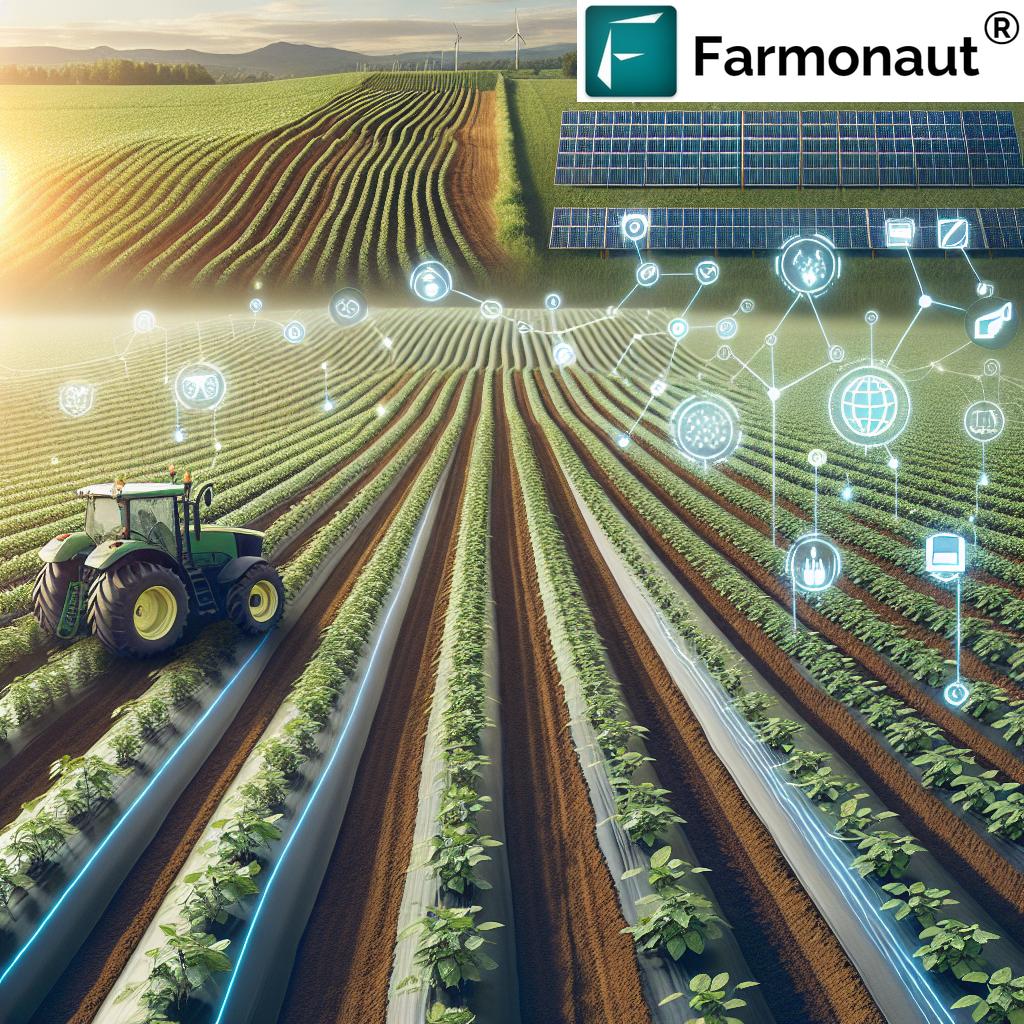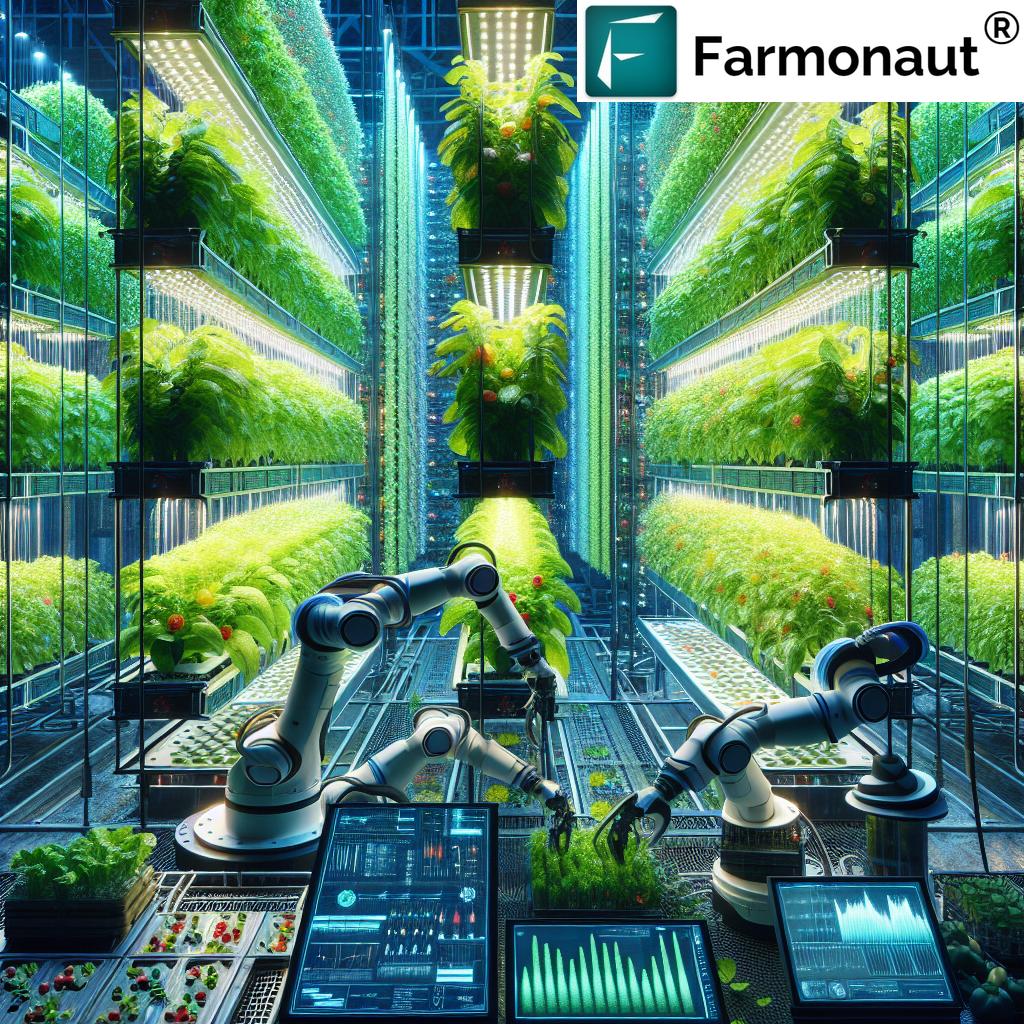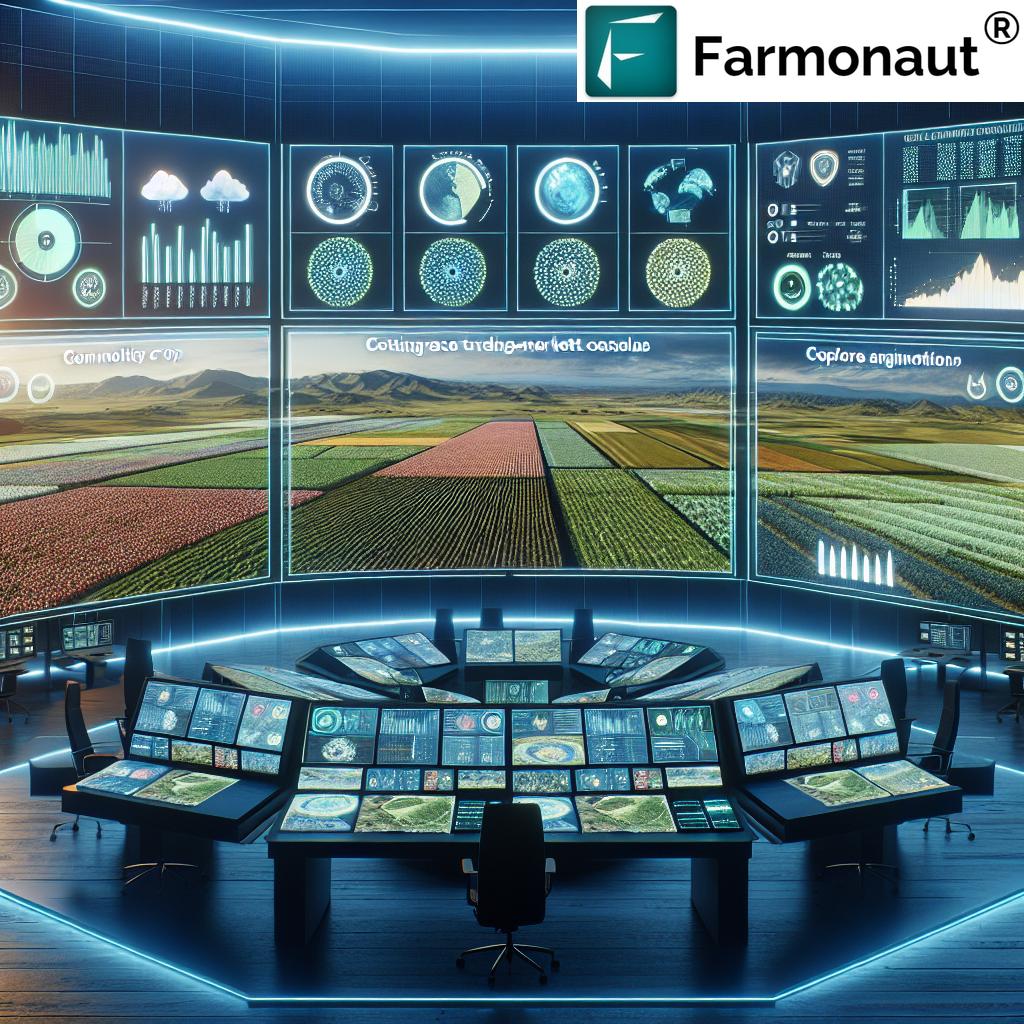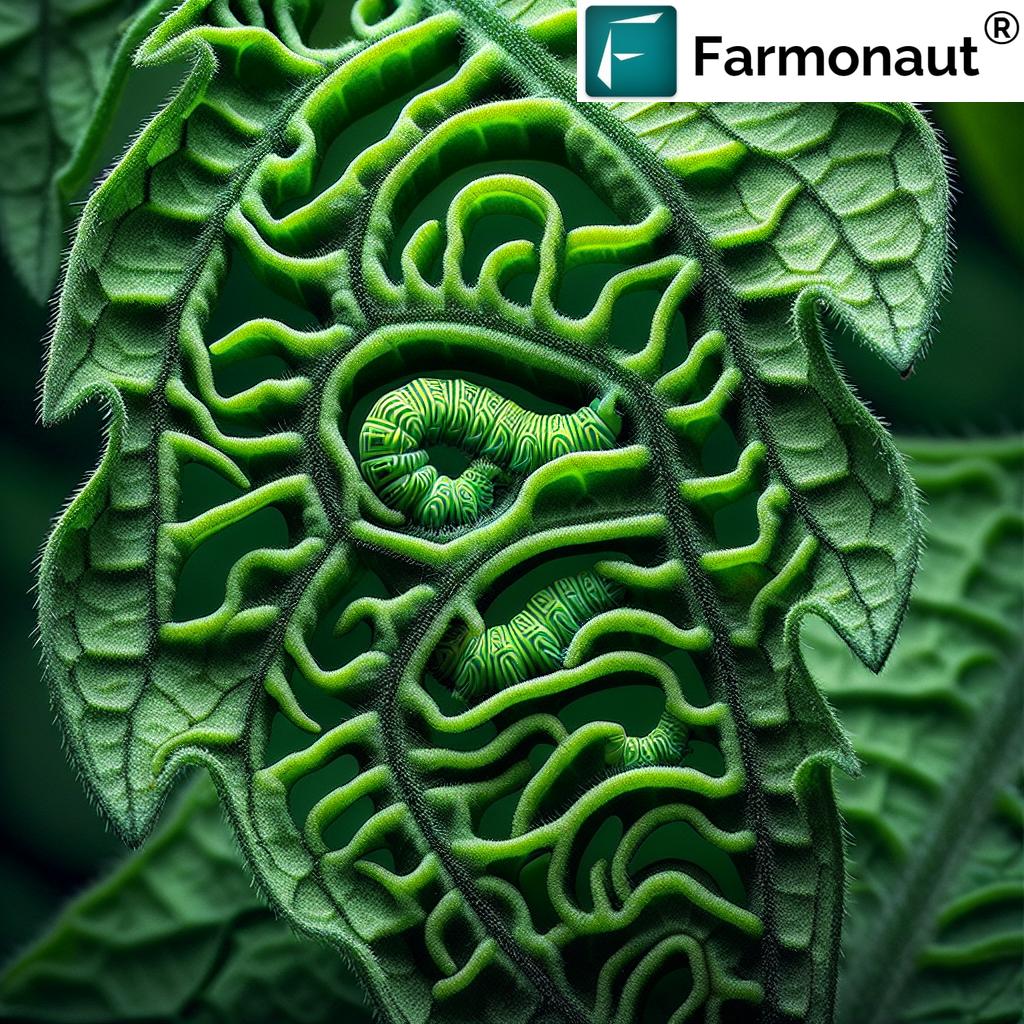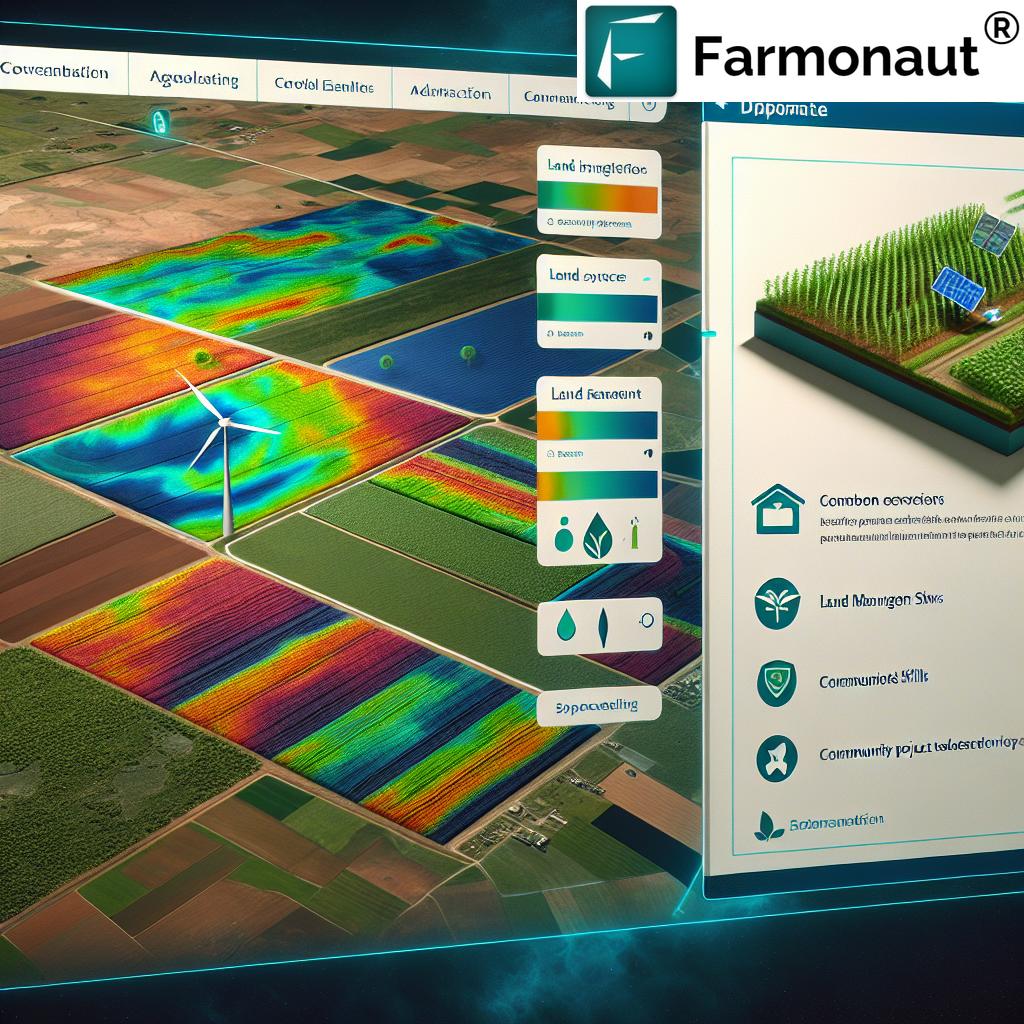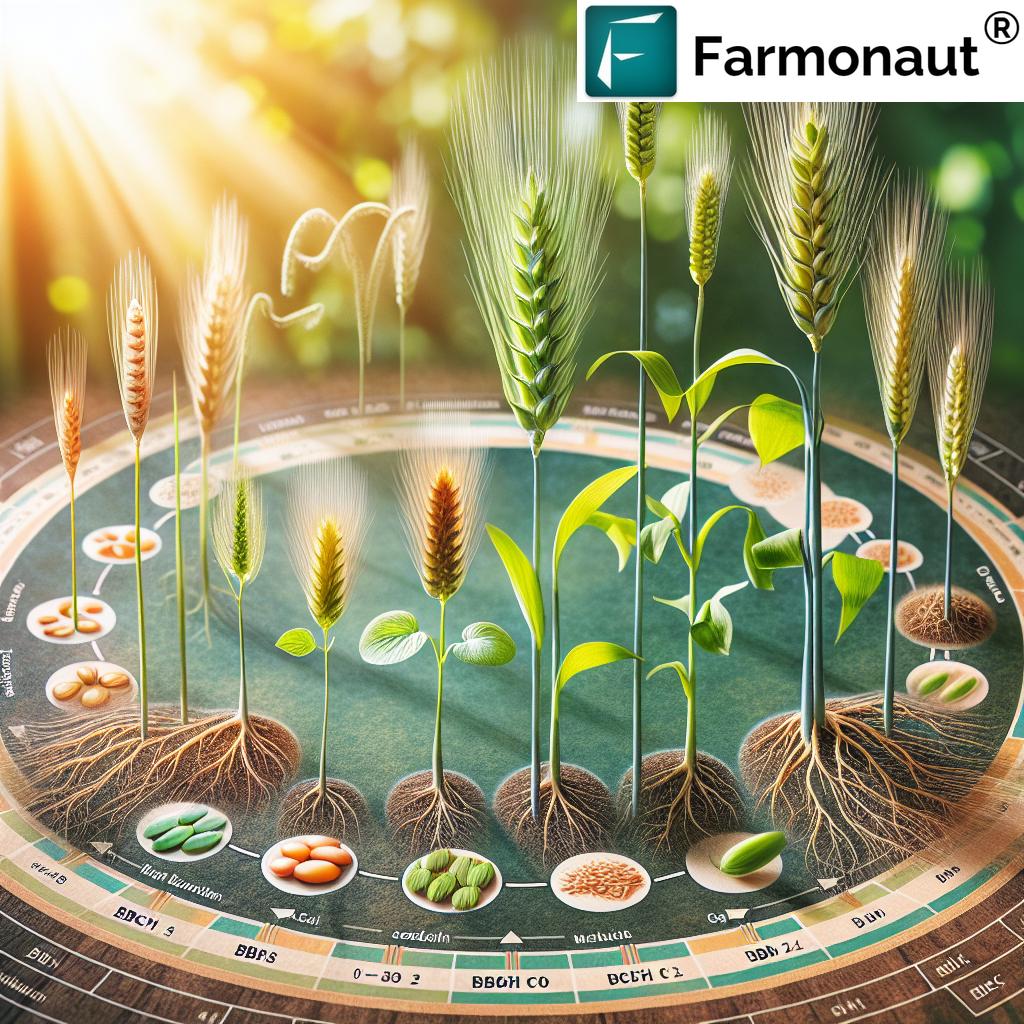Modern Agriculture Technology: 7 Shocking New Advances
“AI-driven precision agriculture can increase crop yields by up to 30% compared to traditional farming methods.”
Introduction: The Evolution of Modern Agriculture Technology
In today’s fast-changing world, modern agriculture technology is transforming the way we view and manage farming, forestry, and related sectors. From addressing labor shortages to combating climate change, the rapid evolution of agricultural technologies holds the key to increased food production, enhanced sustainability, and greater efficiency. Our journey into the future of farming combines the power of precision agriculture systems, artificial intelligence, robotics, data analytics, and more, all working together to monitor, manage, and optimize every aspect of crop growth and resource use.
As farmers, agri-business professionals, innovators, and consumers, we are all beneficiaries of these technological advancements. Let us explore seven shocking new advances that are redefining agriculture and empowering us to meet the challenges of a global food system.
“Over 70% of modern farms now use satellite imagery to monitor crop health and optimize resource use.”
1. Precision Agriculture: Revolutionizing Field Management
Precision agriculture is a groundbreaking approach that employs modern technologies such as GPS, IoT devices, and data analytics to monitor and manage field variability. This technique enables us as farmers and agri-professionals to apply water, fertilizers, and pesticides with incredible accuracy, reducing waste and environmental impact while maximizing yields and crop quality.
- Smart irrigation systems adjust watering schedules based on real-time weather data and soil moisture, leading to significant water savings and improved productivity.
- IoT sensors provide live feedback on field conditions, allowing timely interventions for fertilization or pest control, where and when they’re needed.
- Precision farming minimizes resource use, cuts input costs, and helps maintain soil health over the long term.
The impact of precision agriculture systems is evident in rising adoption rates across the globe, from the plains of India to advanced farms in North America and Europe. With platforms such as Farmonaut making precision agriculture affordable via satellite-based monitoring and actionable insights, farmers can easily integrate these technologies into both small-scale and large-scale operations.
Learn more about how satellite monitoring can empower farmers on the Large Scale Farm Management Product Page—a powerful tool to monitor vast areas with real-time crop and soil analytics.
2. Artificial Intelligence & Machine Learning in Agriculture
The field of artificial intelligence in agriculture has witnessed explosive growth, bringing data-driven insights to farm management. AI and machine learning algorithms process vast datasets—from historical weather patterns to real-time crop health—enabling us to make optimal decisions that boost efficiency and productivity.
- Predict optimal planting times and detect early signs of pest infestations with AI-based models, improving yields and reducing losses.
- AI-driven decision support systems help target specific field areas for irrigation or pest control, conserving water and minimizing chemical use.
- Tools such as Farmonaut’s Jeevn AI Advisory System deliver personalized guidance to farmers, leveraging satellite and local data to offer recommendations that enhance productivity and profitability.
Leverage real-time, AI-based advisories and weather-based strategies with Farmonaut’s Crop Plantation & Forest Advisory solution.
3. Robotics and Automation in Farming
Robotics and automation in farming represent one of the boldest leaps towards maximizing efficiency and reducing labor costs. From the fields of North America to the farms of India, automated robots and robotic harvesters perform tasks such as plowing, planting, weeding, and harvesting with precision unparalleled by traditional methods.
- Robotic harvesters can work day and night, reducing human error and labor dependency while ensuring consistent quality.
- Automated planting systems guarantee uniform sowing, optimizing germination rates.
- Weed control robots identify and control weeds precisely, reducing the application of herbicides and supporting sustainable farming practices.
Fleet management tools such as those provided by Farmonaut’s Fleet Management Platform enable us to track, monitor, and optimize the use of robotics and agricultural machinery across large plantations, reducing downtime and operational costs.
4. Controlled-Environment Agriculture (CEA) & Vertical Farming
Traditional farming is subject to the whims of climate change and unpredictable weather. Controlled-environment agriculture (CEA) bypasses these challenges by letting us grow crops in enclosed greenhouses, indoor facilities, or urban vertical farming towers.
- Vertical farming stacks crops indoors, using artificial lighting and hydroponics or aeroponics, multiplying output per square meter while protecting crops from external pests and diseases.
- Smart greenhouses utilize IoT sensors to monitor and adjust temperature, humidity, and light, enabling year-round production with minimal resource inputs.
- Resource efficiency is further enhanced by combining water recycling and automated climate control systems.
We can learn more about optimizing irrigation and resource use with Farmonaut’s Large Scale Farm Management System, which also supports CEA and greenhouse monitoring at scale.
5. Biotechnology in Farming Practices
Biotechnology in farming is transforming our crops at a genetic level by developing genetically modified organisms (GMOs) that are resistant to pests, diseases, and environmental stresses. Additional advancements like biostimulants and biopesticides promote plant growth and resilience naturally.
- GMOs and gene-edited crops enhance yields and reduce the need for chemical fertilizers and pesticides.
- Biopesticides and biostimulants help farmers promote plant health sustainably, protecting beneficial insects and maintaining biodiversity.
With sustainable farming practices at the core, these tools offer us real options for boosting food output while safeguarding our environment. Platforms like Farmonaut’s Carbon Footprinting Tool allow agricultural businesses to monitor their sustainability performance and reduce environmental impact.
6. Blockchain Technology for Transparency
Blockchain technology is reshaping agricultural supply chains. It offers secure, transparent, and immutable ledgers to track the entire journey of food from farm to fork.
- Traceability solutions boost consumer confidence and command premium prices for authentic, high-quality produce.
- Supply chain transparency eliminates fraud and inefficiency, while helping farmers, food processors, and retailers prove the origin and safety of their products.
- The Farmonaut Product Traceability Platform delivers end-to-end transparency with tamperproof blockchain logs for each stage of production and delivery.
7. Nanotechnology & Nanosensors in Precision Farming
Nanotechnology brings big benefits to modern agriculture through incredibly tiny devices: nanosensors. By embedding sensors at the micro or nanoscale in our fields, we can monitor soil health, detect pathogens, and optimize irrigation with unparalleled accuracy.
- Nanosensors continuously analyze nutrient levels, moisture, soil contaminants, and more, enabling immediate action to prevent yield loss.
- They detect pathogens or pest infestations early, so farmers apply treatments only where and when necessary.
- Innovations in precision agriculture systems help us conserve resources, minimize waste, and improve crop quality.
For real-time, satellite-based monitoring and high-resolution field analytics, Farmonaut’s Applications put these cutting-edge tools at our fingertips, delivering efficient resource use at every level.
Comparison Table of Key Agriculture Technologies
| Technology Name | Year Introduced | Core Principle | Estimated Adoption (% of Farms, 2023) | Key Benefit | Example Application | Environmental Impact Estimate |
|---|---|---|---|---|---|---|
| Precision Drones & GPS Mapping | 2010s | High-resolution aerial crop & soil analysis | 35% | +15% Yield, 30% less waste | Mapping field variability, applying inputs | Up to 25% water savings |
| IoT Field Sensors | 2012 | Continuous soil & environment monitoring | 40% | Optimized irrigation, reduced inputs | Real-time soil moisture and pH | Reduces fertilizer runoff by 20% |
| AI-Based Decision Systems | 2016 | Predictive modeling for efficient farming | 18% | +30% Crop yield potential | Pest prediction, planting optimization | 25% reduction in chemical use |
| Robotic Harvesters | 2017 | Automated crop harvesting | 8% | 70% labor cost reduction | Fruit & vegetable picking | 30% less food waste |
| Blockchain Supply Traceability | 2018 | Transparent product journey tracking | 12% | Fraud prevention, quality assurance | Farm-to-fork tracking systems | Encourages sustainable practices |
| Vertical Farming & CEA | 2015 | Indoor, soil-independent crop growth | 7% | 10x output per area | Urban stacked farming, hydroponics | Up to 95% less water use |
| Nano-enabled Sensors | 2020 | Ultra-precise in-field diagnostics | 3% | Prevents yield loss, real-time alerts | Pathogen/pest detection, soil monitoring | Minimizes chemical application |
This table demonstrates how modern agriculture technology is driving both efficiency and sustainability across the farming sector.
Renewable Energy in Agriculture: Solar & Wind
Renewable energy in agriculture is reshaping the energy landscape of our farms. By integrating solar panels and wind turbines, we reduce reliance on fossil fuels, decrease operating costs, and contribute to climate-friendly food production.
- Solar-powered irrigation and storage facilities ensure farms run smoothly, even in remote areas with unreliable power grids.
- Wind energy supplements power requirements for large-scale operations, providing resiliency and backup in periods of high energy demand.
These renewable sources not only lower long-term costs but also significantly cut the carbon footprint of agricultural practices, aligning with global goals for sustainability and environmental stewardship.
Track your farm’s carbon emissions and progress toward sustainability by utilizing Farmonaut Carbon Footprinting.
Smart Greenhouses & IoT-driven Crop Management
Smart greenhouses automate the monitoring and control of interior growing conditions—temperature, humidity, CO2, and light—using a suite of IoT devices and sensors.
- Automated systems adapt to each crop’s requirements, maintaining consistent yields year-round regardless of outdoor weather.
- Water recycling technologies recover and reuse irrigation water, minimizing waste.
Connect and control your farm’s growing environments—from open fields to advanced greenhouses—via Farmonaut’s mobile or web app, available to all farmers and agribusinesses seeking maximum productivity.
Autonomous Vehicles: Self-Driving Tractors and Harvesters
Autonomous vehicles are bringing a new era to modern agriculture, with self-driving tractors and harvesters equipped with GPS, sensors, and AI able to perform planting, plowing, and harvesting automatically—operating day and night without fatigue.
- Significant reductions in labor costs and increased operational efficiency, particularly for large-scale, multi-field operations.
- With smart scheduling and route optimization, farms boost productivity while minimizing fuel and time waste.
For a complete solution for tracking and managing all your equipment and automated vehicles, consider embracing Farmonaut Fleet Management.
Note: There are still concerns about workforce shifts and the need for new technical skills among rural populations, emphasizing the importance of support and upskilling programs.
Data Analytics for Crop Yields: Decision Support Systems
Advanced data analytics for crop yields is at the heart of smart farming. By integrating information from climate data, soil moisture records, crop health assessments, and pest detection alerts, these decision support systems help us make the best choices for every field.
- Automated forecasting predicts yield outcomes based on current and historic data.
- AI-powered pest detection systems recommend targeted, efficient treatments that cut costs and environmental impact.
Enhance your data-driven farm management with Farmonaut’s Large Scale Farm Management solution, providing analytics, resource allocation, and critical alerts for every stage of production.
Sustainable and Regenerative Agricultural Innovations
Sustainable farming practices and regenerative agriculture aim to restore soil health, increase biodiversity, and create resilient food production systems. Technologies and techniques support this by:
- Implementing bio-fertilizers and reduced chemical use to improve soil fertility naturally.
- Using agroecology principles that combine traditional knowledge with scientific innovation.
- Supporting climate adaptation and mitigation through improved land management, carbon tracking, and sustainable resource allocation.
Government programs and digital platforms like Farmonaut are essential for providing farmers with the tools, insights, and support necessary for this transformation.
Secure your farm’s resilience and access satellite-based verification for crop loans and insurance through Farmonaut Crop Loan and Insurance Platform.
“AI-driven precision agriculture can increase crop yields by up to 30% compared to traditional farming methods.”
Key Challenges and Considerations
While modern agriculture technology offers extraordinary possibilities, we must address important challenges to realize inclusive and widespread benefits:
- High initial costs of advanced tech may limit access for smallholders and developing regions.
- Data privacy and cybersecurity become prime concerns as digital adoption increases.
- Reskilling the workforce is vital to offset labor market shifts resulting from automation and robotics.
- Bridging the gap between large and small farms to prevent digital inequality and maximize positive impact across the sector.
Solutions lie in affordable, scalable tools like Farmonaut’s, strong training programs, and collaborations between technology providers and policy makers.
How Farmonaut Empowers Modern Agriculture Technology
Farmonaut stands at the forefront of the agri-innovation revolution, making precision agriculture technology accessible and scalable for all farmers—whether managing one hectare or 1,000.
- Satellite-Based Crop Health Monitoring: Access multispectral satellite images for real-time analysis of soil moisture, vegetation health (NDVI), and crop conditions. This data-driven approach allows farmers to optimize resource use and improve yields.
- Jeevn AI Advisory System: Delivers tailored, AI-powered advisories and weather forecasts based on precise field data, enhancing productivity and resource use.
- Blockchain-Based Traceability: Guarantees transparency from field to market. Check out the Product Traceability Platform for secure, verifiable supply chains.
- Fleet and Resource Management: Streamlines logistics, machinery usage, and operational planning across farms of any size. Explore Fleet Management for more details.
- Carbon Footprinting: Measures and helps reduce emissions for more climate-resilient farming. More info at Farmonaut Carbon Footprinting.
Farmonaut’s subscription model ensures cost-effective access, with scalable solutions available via web, Android, iOS, and API. For developers and institutions, robust API access and detailed developer documentation make integration seamless.
Ready to transform your farm operations? Download the Farmonaut mobile app or get started with the web version for instant access to next-generation agricultural tools!
Frequently Asked Questions: Modern Agriculture Technology
-
What is modern agriculture technology?
Modern agriculture technology refers to the suite of innovative tools, systems, and digital solutions that improve the efficiency, productivity, and sustainability of farming and related sectors. This includes advancements such as satellite-based crop monitoring, AI-driven advisories, robotics, blockchain supply chain traceability, and more. -
How does artificial intelligence help farmers?
Artificial intelligence in agriculture enables farmers to analyze vast datasets for better crop management; it predicts optimal planting windows, identifies pest risks, and recommends targeted interventions, thereby increasing yields and reducing resource use. -
How can I get started with precision agriculture on my own farm?
With platforms like Farmonaut, you can start by subscribing to their app (available on web, Android, and iOS) for satellite-based crop health monitoring and real-time AI-driven advice—no need for expensive hardware. -
What is the impact of automation and robotics on farm labor?
Robotics and automation boost productivity, reduce labor costs, and enable 24/7 farm operations. However, they also shift demand toward more technically skilled jobs and highlight the need for workforce upskilling. -
Are blockchain and traceability relevant for smallholder farmers?
Absolutely! Blockchain helps farmers of all sizes prove the authenticity and safety of their produce, opening doors to better markets and prices. Farmonaut’s blockchain traceability tools are accessible and designed for farms of any scale. -
How does nanotechnology benefit agriculture?
Nanotechnology, through nanosensors, provides real-time, precise measurements of soil and crop conditions, leading to more efficient water and nutrient use, early pest/disease detection, and higher yields. -
Is renewable energy integration costly?
While the initial investment can be high, renewable energy (solar, wind) pays off quickly by cutting operating costs and enabling off-grid farming. Many tools—including Farmonaut’s analytics—help quantify and track these benefits. -
Where can I find more resources for data-driven and sustainable farming?
Farmonaut’s Apps, APIs, and Developer Docs are great starting points for both individual farmers and agribusinesses seeking deeper insights and control.
Conclusion: The Future of Modern Agriculture Technology
Modern agriculture technology is more than a trend—it is the foundation for tomorrow’s food security, economic resilience, and environmental sustainability. By embracing precision agriculture systems, artificial intelligence in agriculture, robotics and automation in farming, and robust data analytics for crop yields, we unlock new levels of efficiency, transparency, and sustainability in every field and every region.
Companies like Farmonaut are empowering us to make the most of these advances, lowering barriers to adoption and providing scalable, real-time solutions for every type of farm. As the challenges of climate change and global food demand intensify, our willingness to innovate together will ensure a brighter, more secure future for agriculture and society at large.
Get started now: Download the Farmonaut app or explore Farmonaut’s Large Scale Farm Management page for insights and solutions made for your evolving needs. For technology integration, visit the Farmonaut API page and examine the Developer Documentation.
Together, we can grow more, waste less, and cultivate a brighter future using modern agriculture technology.

